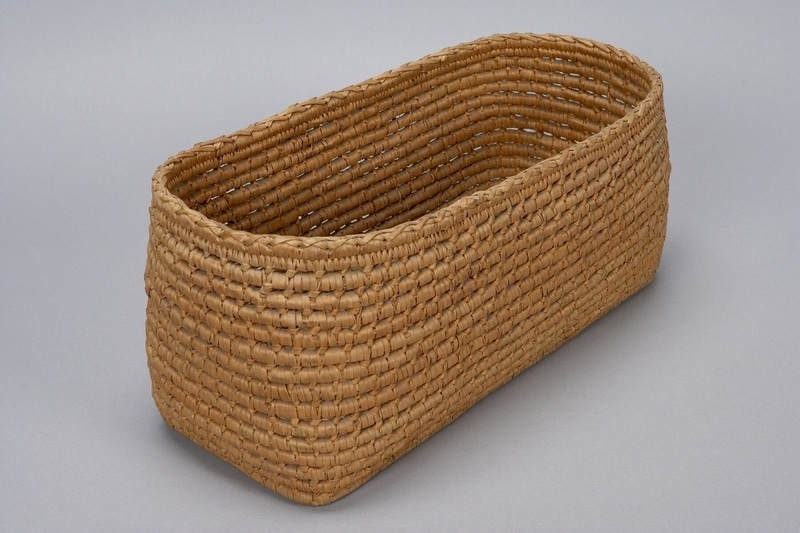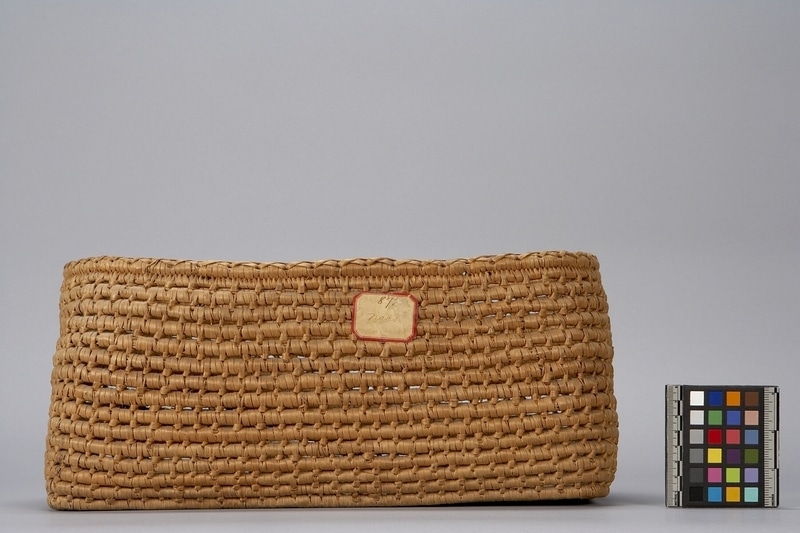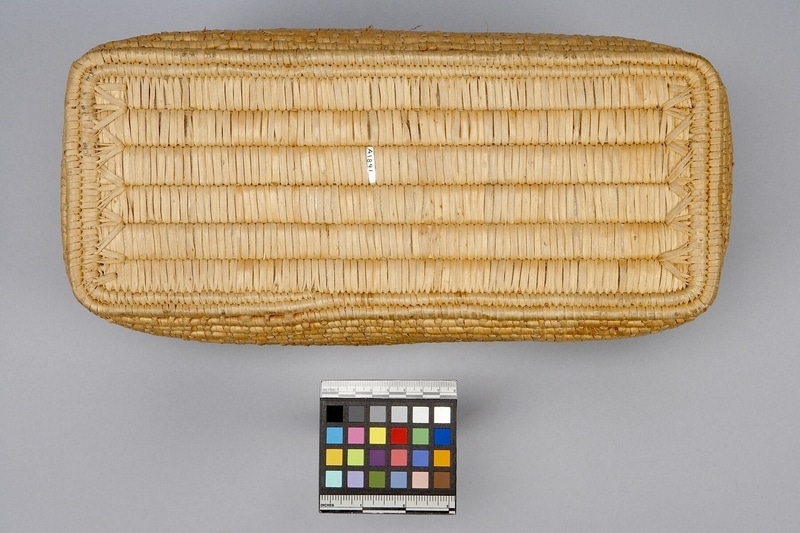Basket Item Number: A1841 from the MOA: University of British Columbia



Description
Openwork basket with a flat, rectangular bottom, straight walls, and an oval-shaped upper rim. Coiled basket with parallel slat base construction. Two rows of splint foundation with bifurcated stitches. Sides also have a splint foundation wrapped with cedar root. At half inch intervals (staggered) a coiled stitch is taken and the stitch is wrapped. The result is an openwork basket. Undecorated.
History Of Use
Coiled basketry traditionally had many uses. It was used for storage of foods, medicines and personal belongings. Some baskets were used for cooking and boiling water, while others had more private uses. Haeberlin and Teit (1928) suggest that in the past not all women were basket makers, but that the skill became more widespread during the early and middle twentieth century when basketry was highly collectible and it became a source of income for many local First Nations women. Basket making declined after the 1950s, but it is still present in many Coast Salish communities and interest is growing.
Cultural Context
basketry; plant technology; storage
Narrative
The Sto:lo Nation has well-documented examples of Mrs. David's work and this basket is stylistically similar to other known works by her. The collector tag found on the basket suggested this was a Nisga'a basket, however, the collector, Dr. Raley, served at the Coqualeetza Indian Residential school, which is located near the Soowahlie reservation and he had several items in his collection from there.
Item History
- Made by Mrs. Mrs. David (Maker) in Cultus Lake, British Columbia, Canada before 1934
- Collected in Nass River, British Columbia, Canada ? between 1893 and 1934
- Owned by George H. Raley before November 1948
- Received from H. R. MacMillan (Funding source) and George H. Raley (Seller) during November 1948
What
- Name
- Basket
- Identification Number
- A1841
- Type of Item
- basket
- Material
- cedar root
- Manufacturing Technique
- coiled openwork
- Overall
- height 6.5 in, width 15.0 in
Who
- Culture
- Coast Salish: Sto:lo: Soowahlie
- Creator
- Mrs. Mrs. David (Maker)
- Previous Owner
- George H. Raley
- Received from
- H. R. MacMillan (Funding source) and George H. Raley (Seller)
Where
- Holding Institution
- MOA: University of British Columbia
- Made in
- Cultus Lake, British Columbia, Canada
- Collected in
- Nass River, British Columbia, Canada ?
When
- Creation Date
- before 1934
- Collection Date
- between 1893 and 1934
- Ownership Date
- before November 1948
- Acquisition Date
- during November 1948
Other
- Item Classes
- basketry
- Condition
- good
- Current Location
- Case 29
- Accession Number
- 1960/0216